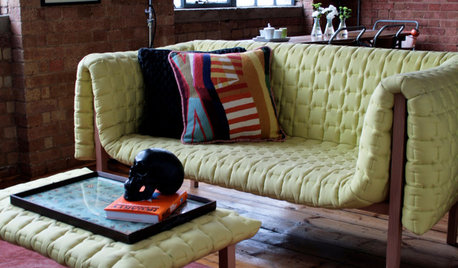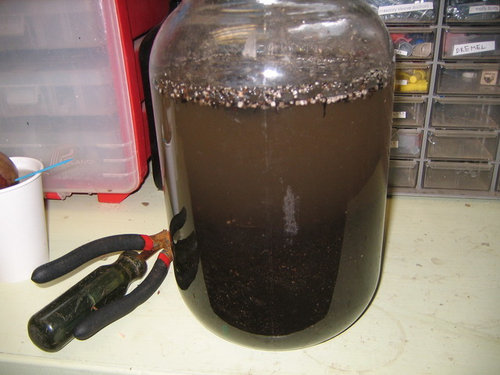soil texture help please
sgull
10 years ago
Related Stories

DECORATING GUIDESPlease Touch: Texture Makes Rooms Spring to Life
Great design stimulates all the senses, including touch. Check out these great uses of texture, then let your fingers do the walking
Full Story
GARDENING GUIDESHow to Pick a Mulch — and Why Your Soil Wants It
There's more to topdressing than shredded wood. Learn about mulch types, costs and design considerations here
Full Story
GARDENING GUIDESHow to Stop Worrying and Start Loving Clay Soil
Clay has many more benefits than you might imagine
Full Story
GARDENING GUIDESHave Acidic Soil in Your Yard? Learn to Love Gardening Anyway
Look to acid-loving plants, like conifers and rhododendrons, to help your low-pH garden thrive
Full Story
GARDENING GUIDESThe Poop Scoop: Enrich Your Soil With Good Old Manure
Get over the ick factor already — this natural super-ingredient for soil has so many benefits, you'll wonder why you ever went chemical
Full Story
GARDENING GUIDESGardening Solutions for Dry, Sandy Soils
Has your desert or beachy site withered your gardening creativity? Try these ideas for a beautiful, easy-care landscape
Full Story
GARDENING GUIDESGardening Solutions for Heavy Clay Soils
What’s a gardener to do with soil that’s easily compacted and has poor drainage? Find out here
Full Story
LANDSCAPE DESIGNHow to Shape a Rain Garden and Create the Right Soil for It
Learn how to grade, lay out and amend the soil in your rain garden to support your plants
Full Story
HOUSEPLANTSMother-in-Law's Tongue: Surprisingly Easy to Please
This low-maintenance, high-impact houseplant fits in with any design and can clear the air, too
Full Story







gardengal48 (PNW Z8/9)
toxcrusadr
Related Professionals
North New Hyde Park Landscape Architects & Landscape Designers · Aloha Landscape Contractors · Cornelius Landscape Contractors · Desert Hot Springs Landscape Contractors · Euclid Landscape Contractors · Hilo Landscape Contractors · Melrose Landscape Contractors · New Baltimore Landscape Contractors · Ramsey Landscape Contractors · West Orange Landscape Contractors · Boise Decks, Patios & Outdoor Enclosures · Gastonia Decks, Patios & Outdoor Enclosures · Lincoln Decks, Patios & Outdoor Enclosures · Palo Alto Decks, Patios & Outdoor Enclosures · Roseville Decks, Patios & Outdoor EnclosuresTiffany, purpleinopp Z8b Opp, AL
sgullOriginal Author
Tiffany, purpleinopp Z8b Opp, AL
sgullOriginal Author
gardengal48 (PNW Z8/9)
Tiffany, purpleinopp Z8b Opp, AL
sgullOriginal Author
Tiffany, purpleinopp Z8b Opp, AL
sgullOriginal Author
Tiffany, purpleinopp Z8b Opp, AL
Tiffany, purpleinopp Z8b Opp, AL
sgullOriginal Author
sgullOriginal Author
sgullOriginal Author
Tiffany, purpleinopp Z8b Opp, AL
sgullOriginal Author
Kimmsr
Tiffany, purpleinopp Z8b Opp, AL
sgullOriginal Author
gardengal48 (PNW Z8/9)
sgullOriginal Author
Tiffany, purpleinopp Z8b Opp, AL